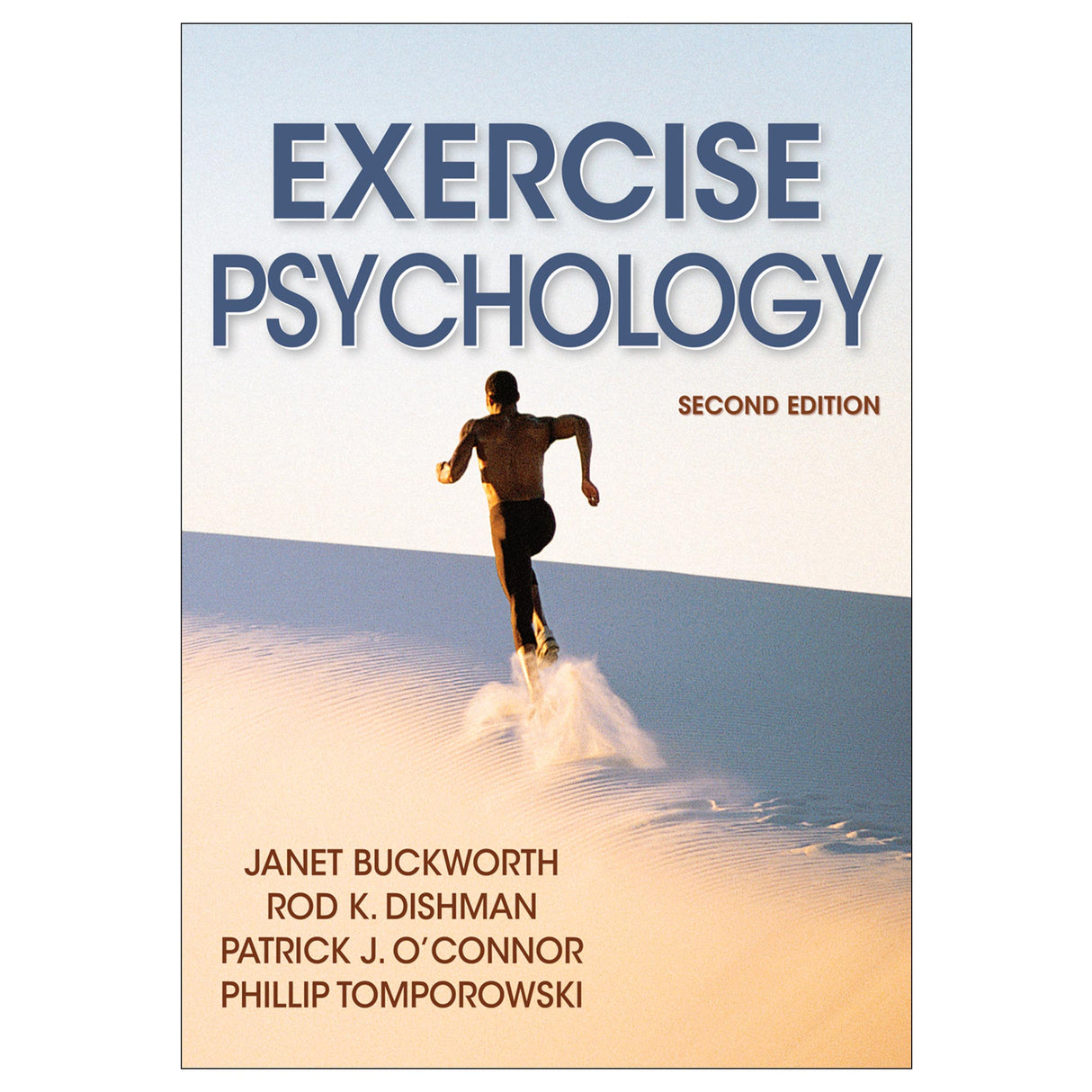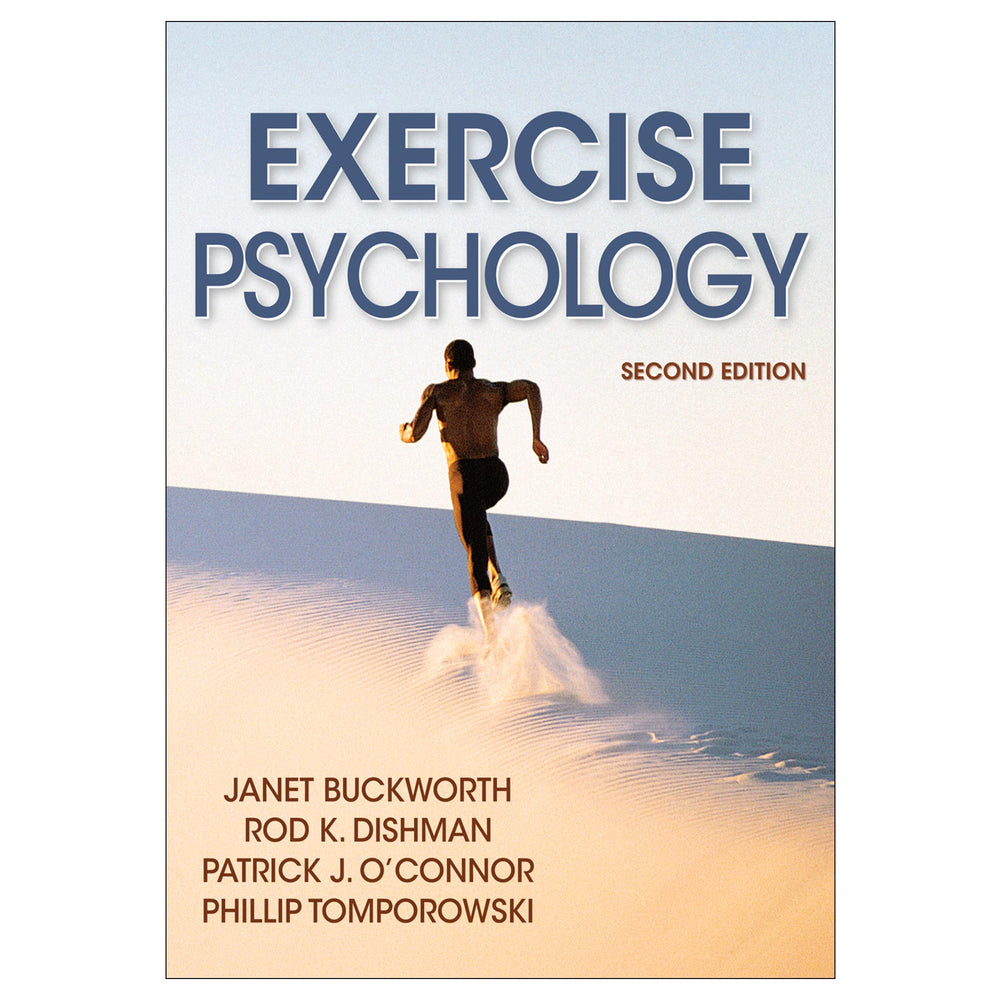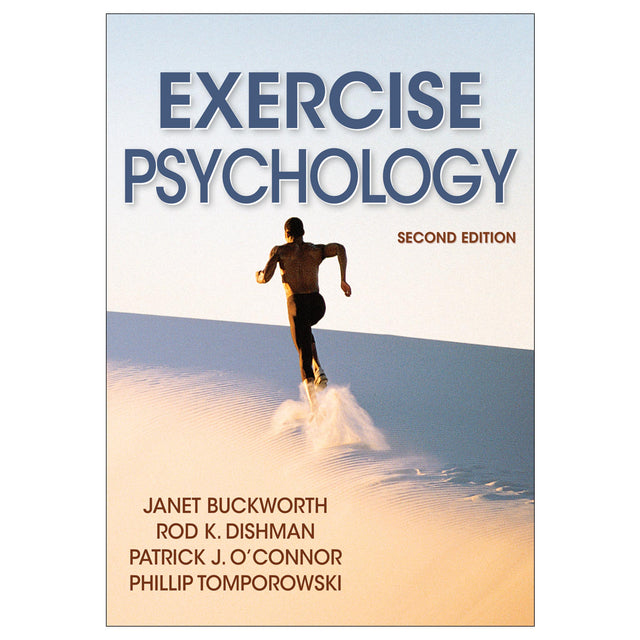Exercise Psychology-2nd Edition
$49.00 CAD
Exercise Psychology, Second Edition, addresses the psychological and biological consequences of exercise and physical activity and their subsequent effects on mood and mental health. Like the first edition, the text includes the latest scholarship by leading experts in the field of exercise adoption and adherence. This edition also incorporates research on lifestyle physical activity to reflect this growing area of study over recent years.
In contrast to other exercise psychology textbooks grounded in social psychology, Exercise Psychology, Second Edition, presents a psychobiolocal approach that examines the inner workings of the body and their effects on behavior. From this unique perspective, readers will learn the biological foundations of exercise psychology within the broader contexts of cognitive, social, and environmental influences. By exploring the biological mechanisms associated with individuals’ behavior, Exercise Psychology, Second Edition, challenges students and researchers to critically examine less-explored methods for positive behavior change.
To reflect the continued growth of information in exercise psychology since the first edition was published, the second edition of Exercise Psychology offers the following new features:
• Three new chapters on exercise and cognitive function, energy and fatigue, and pain
• Thoroughly revised chapters on the correlates of exercise, neuroscience, stress, depression, and sleep
• An image bank featuring figures and tables from the text that can be used for course discussion and presentation
Authors Buckworth and Dishman, along with newly added authors O'Connor and Tomporowski, bring subject area expertise to the book and provide an in-depth examination of the relationships between exercise and psychological constructs. The findings on both classic and cutting-edge topics are clearly and cohesively presented with the help of relevant quotes, sidebars, suggested readings, and a glossary to guide students through their studies.
Exercise Psychology, Second Edition, provides an in-depth examination of the psychological antecedents and consequences of physical activity, helping readers understand the mental health benefits of exercise as well as the factors involved in exercise adoption and adherence. Thoroughly revised and updated, the second edition of Exercise Psychology balances the biological foundations of the brain and behavior with theory and knowledge derived from behavioristic, cognitive, and social approaches.
Audience
Textbook for graduate and upper-level undergraduate courses in exercise psychology and other similar courses in fitness or health psychology; reference for academic libraries and researchers in kinesiology and psychology.
Chapter 1. Foundations of Exercise Psychology
Dualism Versus Monism
Biological Foundations
Cognitive Foundations
Behavioral and Social Foundations
Contemporary Exercise Psychology
Overview of Physical Activity and Mental Health
Overview of Physical Activity Behavior
Summary
Websites
Chapter 2. Basic Concepts in Exercise Psychology
General Concepts
Psychological Constructs
Multidimensional Scales
Covariance Modeling
Defining Physical Activity and Fitness
Measuring Physical Activity
Behavioral Genetics
Research Issues
Summary
Websites
Chapter 3. Behavioral Neuroscience
The Neural Network
Neurotransmitters
Cellular and Molecular Biology of the Brain
Animal Models
Measuring Brain Activity
Summary
Websites
Part II: Exercise and Mental Health
Chapter 4. Stress
Background and Definitions
Effects of Exercise
Mechanisms
Contemporary Views: Exercise Research
Summary
Websites
Chapter 5. Affect, Mood, and Emotion
Definitions of Terms
A Brief History
Contemporary Views of Affect and Emotion
Neuroanatomy of Affect and Emotion
Factors Influencing the Effects of Exercise on Affect
Research on Exercise and Affect
Psychophysiological and Behavioral Assessment
Mechanisms
Hazards of Exercise?
Summary
Websites
Chapter 6. Anxiety
Prevalence and Social Impact
Definitions
Types of Common Anxiety Disorders
Effects of Exercise
Psychotherapy
Pharmacotherapy
Mechanisms
Summary
Websites
Chapter 7. Depression
Prevalence and Social Impact
Clinical Description
Effects of Exercise
Pharmacotherapy
Mechanisms
Summary
Websites
Chapter 8. Exercise and Cognitive Function
Definition
Measurement
Clinical Neuropsychology
Neurophysiological Measures
Research
Mechanisms
Disease States, Exercise, and Cognition
Factors that Moderate the Effects of Exercise
Issues in Research
Summary
Websites
Chapter 9. Energy and Fatigue
Definitions
A Brief History
Conceptual Framework
Measurement
Mechanisms
Summary
Websites
Chapter 10. Sleep
Sleep Disturbances
Prevalence and Impact of Sleep Disturbances
A Brief History
Definitions
Meaurement
Research on Exercise and Sleep
Mechanisms
Summary
Websites
Chapter 11. Exercise and Pain
Definitions
Measurement
Scope and Impact of Chronic Pain
Neurobiological Basis of Pain
Pain During and After Acute Exercise
Effects of Exercise Training
Summary
Websites
Chapter 12. Self-Esteem
The Self-System
Theories and Models
Factors Influencing Self-Esteem
Measurement
Exercise and Self-Esteem
Mechanisms
Distorted Body Image and Exercise
Summary
Websites
Part III: Psychology of Physical Activity Behavior
Chapter 13. Correlates of Exercise and Physical Activity
Classification of Correlates
Issues in Research
Summary
Websites
Chapter 14. Theories of Behavior Change
Behaviorism
Cognitive Behaviorism
Social Cognitive Theory
Bandura’s Self-Efficacy Theory
Theory of Planned Behavior
Self-Determination Theory
Stage Theories
Other Theories Applied to Exercise and Physical Activity
Issues in the Application of Theories of Exercise Behavior
Summary
Websites
Chapter 15. Interventions to Change Physical Activity Behavior
Overview
Intervention Context
Specific Strategies
Environment and Policy–Based Interventions
Why Can’t We Keep People Active? Mediators and Intervention Effectiveness
Summary
Websites
Chapter 16. Perceived Exertion
A Brief History
Psychophysics and Perceived Exertion
Comparing People
Signals to Perceived Exertion
Sensory Nervous System
Physiological Mediators
Psychological and Sociocultural Influences
Perceived Exertion: The Final Common Pathway
Practical Use of Ratings of Perceived Exertion
Summary
Websites
"This second edition is a great contribution to the field. It contains the latest peer-reviewed citations to support the theory presented. The authors are well-respected scientists in the field and their expert contribution is welcomed."
--Doody's Book Review (5 star review)
Contexts to consider when selecting behavior change strategies
Examine how exercise could alter pain
Image bank. Includes all of the figures and tables from the text, sorted by chapter, that can be used in developing a customized presentation based on specific course requirements or used in creating other learning aids for students.





